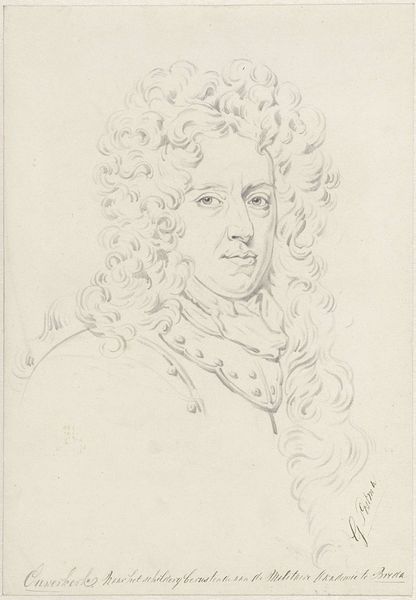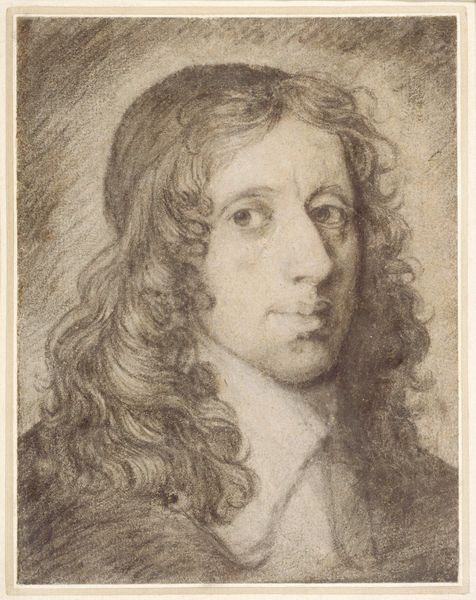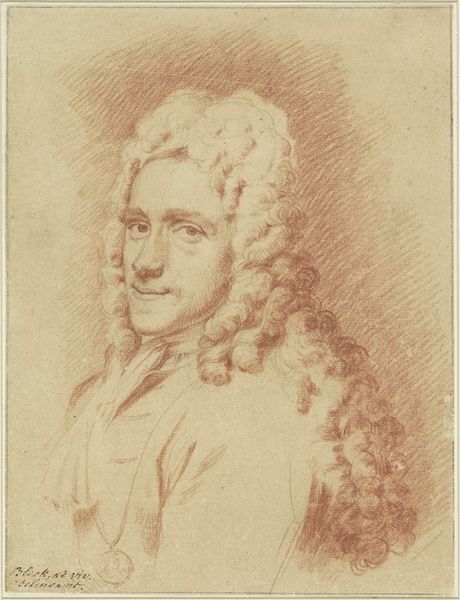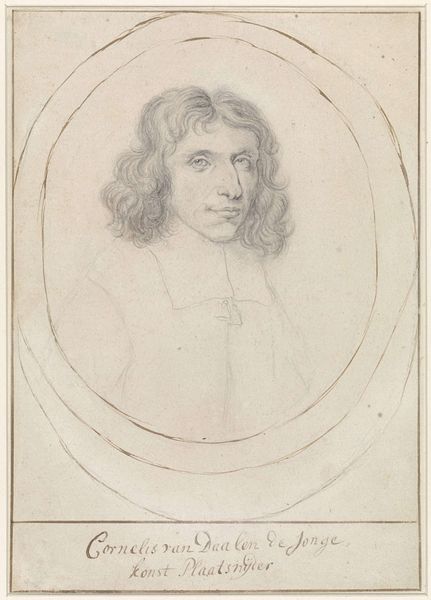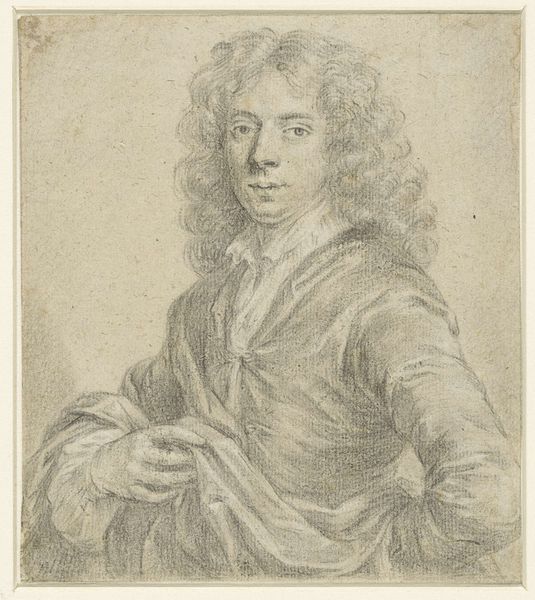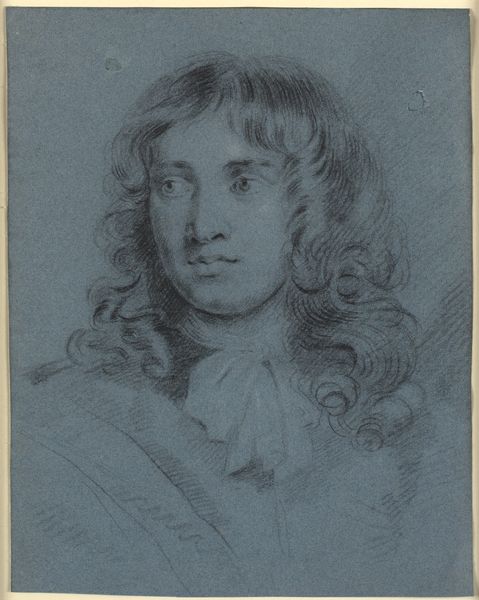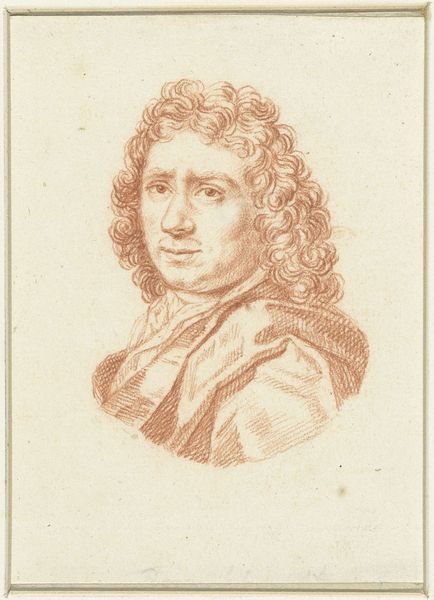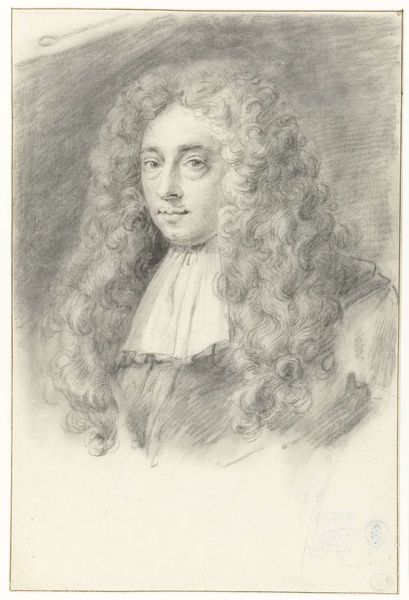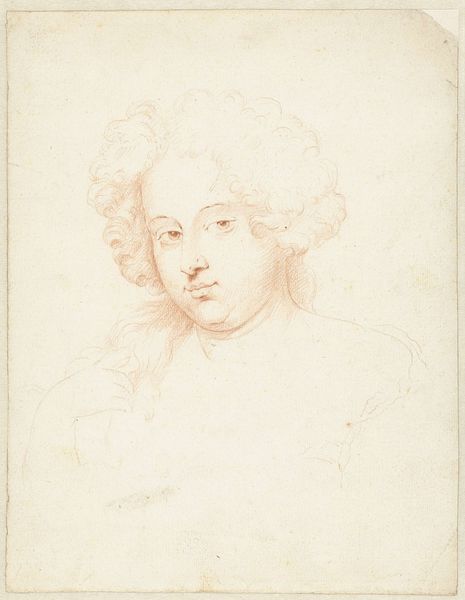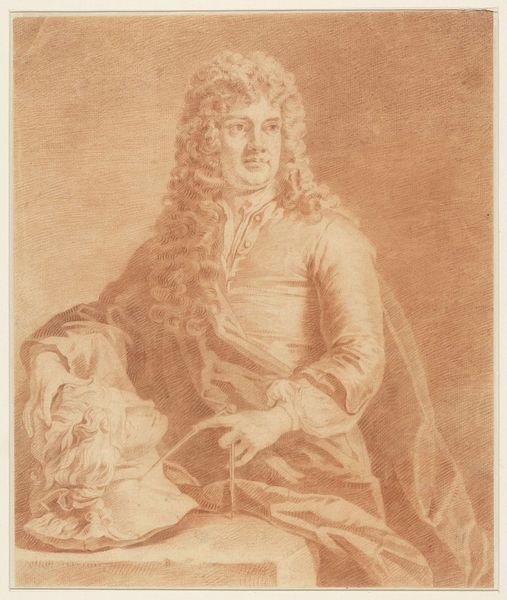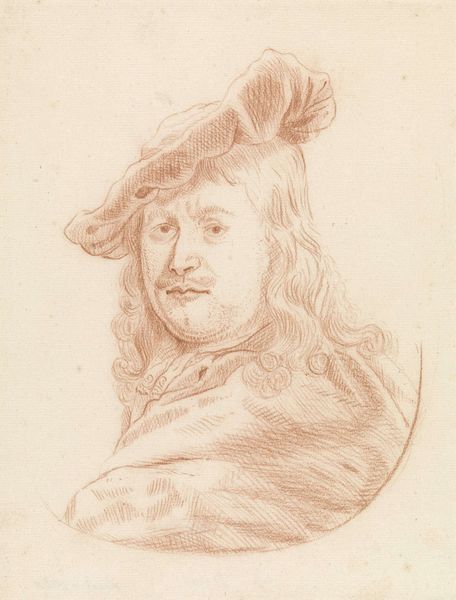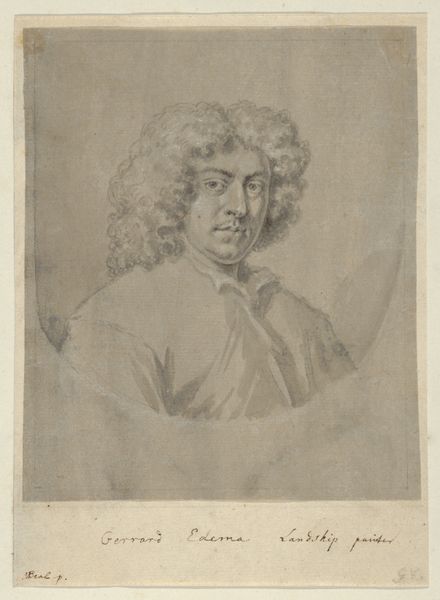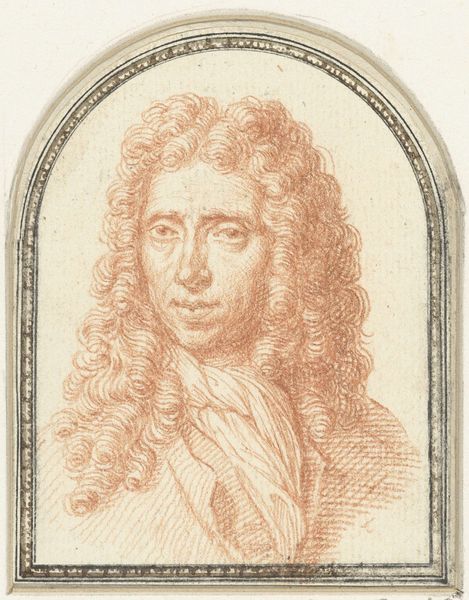
drawing, charcoal
#
portrait
#
drawing
#
baroque
#
charcoal drawing
#
figuration
#
charcoal
Dimensions: height 200 mm, width 157 mm
Copyright: Rijks Museum: Open Domain
Editor: Here we have "Mansportret met lange pruik," or "Portrait of a Man with a Long Wig," created sometime between 1649 and 1684 by Caspar Netscher. It’s a charcoal drawing held here at the Rijksmuseum. The use of red chalk gives it an ethereal feeling. What do you see in this work, particularly regarding its formal qualities? Curator: Immediately, I am drawn to the interplay of line and form. Observe how Netscher utilizes delicate, almost ethereal lines to construct the elaborate wig. The very density and careful placement of these lines articulate volume and texture, particularly as they cascade around the subject's face. The portrait embodies the Baroque aesthetic through its concentration of curved forms, which invites us to visually explore its intricate, almost labyrinthine composition. Editor: I can see that. The wig feels almost like its own character. Do you think that contrast is intentional? Curator: Precisely. Consider how the face itself, rendered with more controlled and economical strokes, serves as a central anchor. The lines define the planes of the face to hold the attention without competing with the elaborate composition that radiates around it. The very structure of the piece utilizes formal contrast to emphasize the wig as the principal site of visual interest. Do you notice anything about the direction of his gaze and the planes of the face in contrast with the details of his neckwear? Editor: Now that you point it out, the direct gaze does create a kind of tension against the looser depiction of the garments and hair. The simplicity of his face feels grounded by the sharp angles of the planes, in comparison with the Baroque style that otherwise dominates the artwork. Curator: Exactly. This controlled opposition directs us to reflect upon how the artist balanced realistic and symbolic components within the artwork's visual language. By doing so, we can examine how Netscher creates tension between presence and artifice through line, contrast and compositional structure. Editor: It’s amazing to consider how much information is conveyed through these carefully orchestrated techniques. Thank you! Curator: My pleasure. This examination demonstrates the expressive potential within a carefully composed work of portraiture, a great lesson for all.
Comments
No comments
Be the first to comment and join the conversation on the ultimate creative platform.
